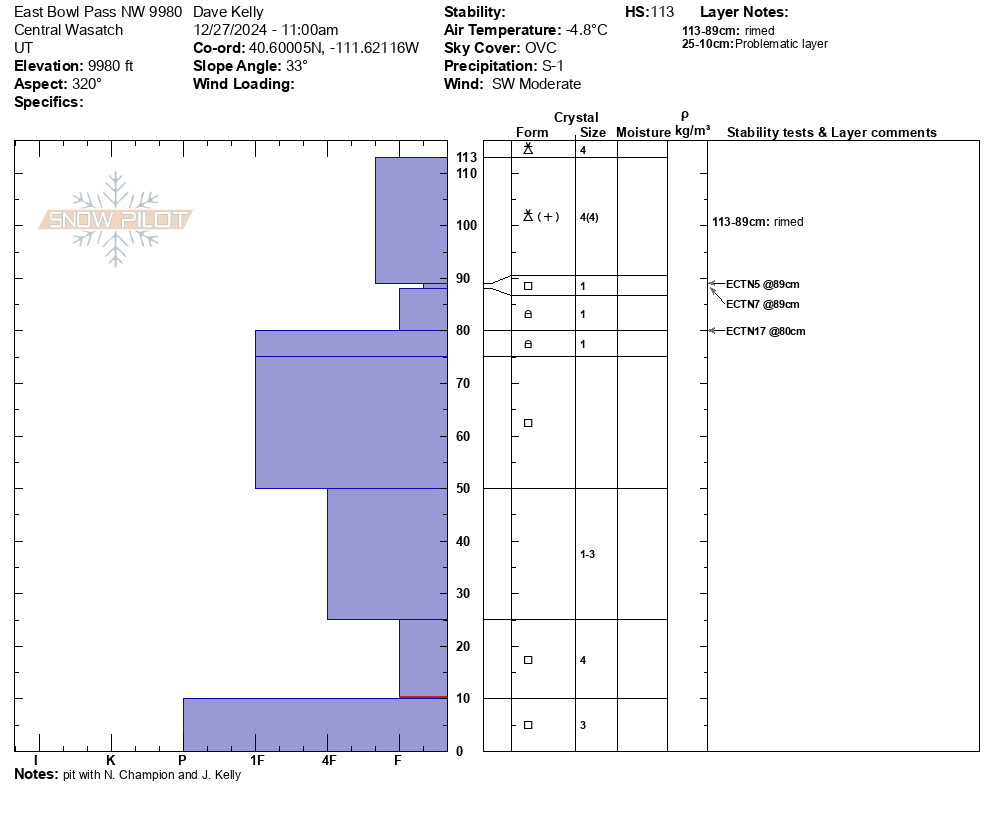Observation Date
12/27/2024
Observer Name
Kelly, Kelly, Champion
Region
Salt Lake » Big Cottonwood Canyon » Silver Fork
Location Name or Route
Grizzly-East Bowl-West Bowl- Emma's
Comments

Total height of snow was 44" (113cm). We got extended column tests without propagation 3' (89cm) from the ground under the newest snow on a layer of faceted grains. This snowpack showed us very weak structure and we did not believe that where we dug had enough recent snow or wind loaded snow to be a problem just yet. As the storm moves through this danger will increase particularly if stiffer wind drifts load in on top of this weak faceted snow. The weak faceted snow (first hard) 12"" (25cm) from the surface was smooshing straight to the ground. This layer will not support much weight.
Similar snowpit location to one dug on November 14, 2024 and October 29, 2024.
We skied one north facing slope at 10,000' in elevation. This slope was less than 30 ° in steepness and it was quite eery when the first skier dropped in and the entirety of the slope collapsed and shot cracks back up towards the ridge. If this slope had been any steeper it would have been an avalanche. We talked about the low angle nature of the slope and the fact that it was not connected to, below, or directly besides another slope greater than 30 °in steepness before we skied it. As the day went on and more new snow and wind added additional weight to an already fragile snowpack, the red flags became more apparent. It was a great reminder to make conservative terrain choices on both our descent and ascent to get back home safely.
Today's Observed Danger Rating
Considerable
Tomorrows Estimated Danger Rating
High
Coordinates






